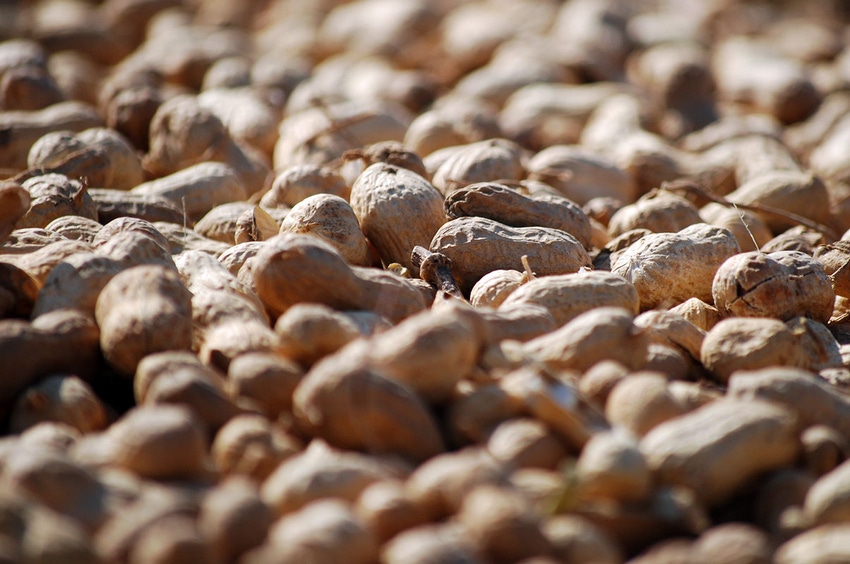
For almost a decade the Georgia-06G peanut variety has dominated the runner market, and for good reason. It's been a champ. But a few contenders in the pipeline now may give it a run for the acres.
When a bird takes flight over a peanut field anywhere in the lower Southeastern states, it more than likely flies over the Georgia-06G peanut variety released by the University of Georgia peanut breeding program in 2006. It reached mass consumption in 2010.
Southeast peanut farmers who plant for the runner market have grown Georgia-06G on 85 percent to 90 percent of their peanut acres for many years. The variety, urged on by improved management practices, has become a yield rock star across most soils and conditions, with an eye-popping potential to knockout four tons per acre with good quality.
Scott Monfort is the University of Georgia peanut agronomist and heads up the UGA Peanut Team. He and his cohorts conduct peanut variety trials annually, and in 2019 evaluated 10 varieties. He sat down with Southeast Farm Press Nov. 20 and provided a preview of what they learned.
"We're always looking for more information to help growers make better decisions, but you could say we're in search of that next variety that will overtake 06G. Because 06 has been around so long, many people have a feeling that it is playing out. Well, it's not playing out. I can tell it is hard to find something that consistently out beats 06," Monfort said.
(EDITOR'S NOTE: This article was updated Dec. 3 to correct the spelling of the Auburn University peanut variety, which is correctly AU-NPL 17. Like to thank Dr. John Beasley, head of Auburn’s Crop, Soil and Environmental Sciences Department, or bringing it to our attention. Thanks for reading, John.)
There are some candidates coming on with strong yield potential, disease packages and solid grading scores that have potential to compete for Georgia peanut acres:
Georgia-16HO, a high-yielding, high-oleic, TSWV-resistant, large-seeded runner developed by UGA.
FloRun 331, a high-yielding, high-oleic, TSWV-resistant, medium-seeded, runner developed by the University of Florida.
AU-NPL 17 - a high-yielding, high-oleic, TSWV-resistant runner developed by Auburn University and the USDA National Peanut Research Laboratory in Dawson, Ga.
Georgia-18RU, a high-yielding, normal-oleic, medium-to-large seeded runner resistant to tomato spotted wilt virus and leaf scorch.
The competitor's stats for the 2019 season included:
Georgia-16HO
In Tifton, Ga., on irrigated reduced tillage averaged 7259.6 pounds per acre with grade of 74.
In Tifton on irrigated conventional tillage averaged 7476.4 pounds with grade of 75.3.
In Tifton on dryland averaged 3959 pounds.
FloRun 331
In Tifton on irrigated reduced tillage averaged 7108.6 with a grade of 73.3.
In Tifton on irrigated conventional tillage averaged 7605.9 pounds with grade of 73.1
In Tifton on dryland 5047.8 pounds.
AU-NPL 17
In Tifton on irrigated reduced tillage average 6990.9 pounds with grade of 72.6.
In Tifton on irrigated conventional tillage average 7301.9 pounds with grade of 72.6.
In Tifton on dryland 3998.5 pounds.
Georgia-18RU
In Tifton on irrigated reduced tillage averaged 7632 pounds with grade of 76.6.
In Tifton on irrigated conventional tillage averaged 7788.6 pounds with grade of 76.5.
In Tifton on dryland 4714.8 pounds.
The Ga-06G's stats in Tifton were:
7269.8 on irrigated reduced tillage with grade of 77.
7898.1 on irrigated conventional tillage with grade of 75.
5324.3 pounds on dryland.
Monfort said the trials had other notable mentions, including Georgia-12Y, another high-yielder growers like but one that hasn't gained traction within the industry, and TifNV, a new high-oleic, nematode-resistant variety developed by USDA and UGA, which averaged between 6,600 pounds and 6,800 pounds per acre with grade score between 71 and 72 in 2019 UGA irrigated trials.
In Pulaski County, Ga-18RU with a yield of 5,248 pounds per acre out did Ga-06G by 523 pounds. Ga-16-HO outdid O6G by 558 pounds. Across the board, 18RU maintained a 1.5 point to 2 point better quality score than 06G.
None at this time competes head-to-head with 06G in a dryland situation, especially during a drought like 2019 laid on most of Georgia's peanut growing region.
Top Contender?
Of all the varieties, he said, 18RU has the highest potential to take acres away from 06G. The variety statistically yields as good as 06G in most trials and has a better average grade.
"The only caveat I have on 18RU is tomato spotted wilt situation. We had some early-planting that got hammered with tomato spotted wilt. They had Imidacloprid on them and not Thimet. So, I think we're going to have to put that caution on 18RU being planted early and if you do you need to put Thimet under it to give it all the protection you can from the virus," he said.
Monfort said Ga-06G will not relinquish its title as top runner variety anytime soon. No one variety may take over the role it has played over the last decade. More than likely, these newer varieties coupled with cultural practices to improve them down the road will just eventually outpace 06-G in different ways or for different market share. Instead of one dominate variety, a more-diverse mix of varieties will find a place in the runner landscape.
Though 06-G has been a workhorse, depending too much for too long on one variety has its risks.
"For now, 06G will continue to be the go-to variety for us and I imagine in 2020 it will again account for 85 percent to 90 percent of our acreage in Georgia and the Southeast," he said.
About the Author(s)
You May Also Like






